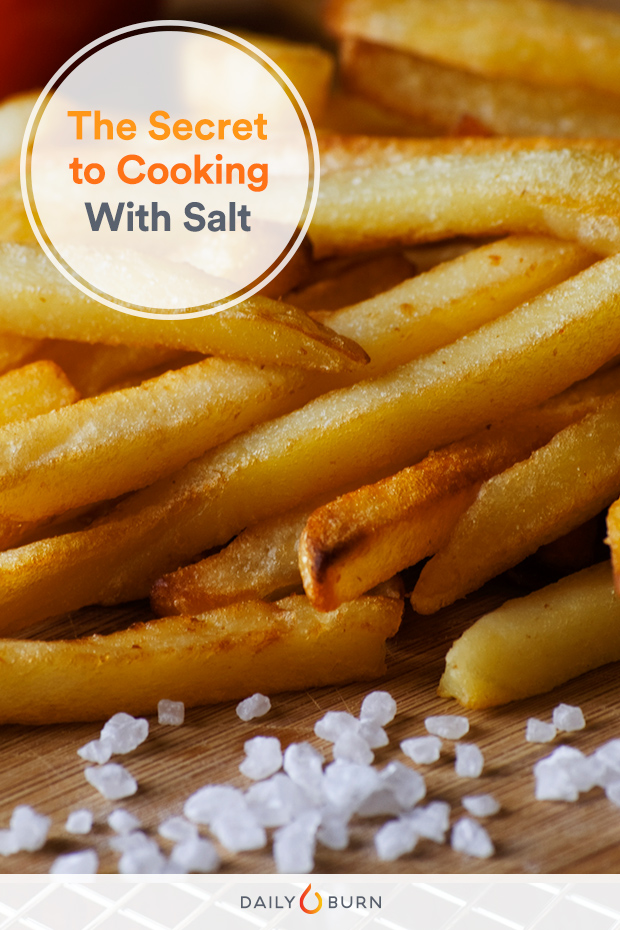
Salt is back in the spotlight when it comes to your health. This month, the CDC reported that roughly 90 percent of American children and adults consume more than the daily-recommended amount of sodium — 2,300 mg, which is about one teaspoon. (A little goes a long way!) Over the long run, eating too much salt has been shown to raise blood pressure, which can lead to heart disease or stroke.
But you don’t need to eliminate salt completely if you want to keep your sodium in check. Read on to learn the best way to enjoy those savory foods — without putting your health at risk.
Beware: Salt You Can’t Taste
The majority of salt in our diets doesn’t come from the shaker sitting on your dinner table. The main culprit: Processed foods, says Rebecca Blake, MS, RD, CDN, Senior Director of Clinical Nutrition at Mount Sinai Beth Israel. “Canned foods and frozen meals are particularly high in sodium,” says Blake, noting that the sweetness of some foods often masks the salt that goes into preserving them. (Because, yes, they’re loaded with added sugar, too.)
RELATED: 7 Free Tutorials on How to Cook Practically Anything
“It’s our culture to buy foods with a long shelf life,” says Nora Minno, Daily Burn Health/Fitness Coach, RD, CDN. Think: Lunch meats, frozen dinners, cereals, soups and more.
But there’s a consequence to that convenience: Because of preservatives and sodium, some jarred pasta sauce brands can pack up to 500 milligrams of sodium per serving, or roughly 20 percent of your recommended daily intake. Mama mia! “Canned soups are notoriously high in salt, and even some of the reduced sodium options, but not all people can detect this,” says Blake.
How You Can Have Your Salt and Eat It Too
“When you cook, you’re in control.”
Your low-sodium strategy: Skim that label before putting anything in your shopping cart, says Blake. Minno agrees: “Anything you can buy on a shelf, you want to read the label and be critical of that.” She notes that many people start eating loads of salads when they’re trying to be healthier, but lots of premade salad dressings have a surprising amount of sodium. (And fair warning: These restaurant salads can pack over 1,000 calories, too!)
The best way to keep salt in check? Ditch the takeout box and frozen dinners and get back to basics in the kitchen. “Typically, these food companies are more concerned with whether you like [their products] instead of your health,” says Minno. “When you cook, you’re in control.”
Minno suggests using herbs, spices, lemon juice, pepper and onion to season your meals. “Even something simple like garlic can add a ton of flavor to a dish,” she says. And if you still need to add some salt to your homemade granola, read on for Minno’s advice on which types to use for every salt situation.
RELATED: Is Personalized Nutrition the Best Way to Lose Weight?
Your Guide to Salt
Kosher Salt
Use It For: Everyday cooking
Looks Like: Coarse, bigger grains
Since kosher salt contains different sized grains, which might not distribute evenly in your cookie dough, it’s not the best for baking, says Minno. But it’s great for seasoning meats and vegetables for a quick weeknight dinner. The salt will dissolve pretty quickly when you add it to chimichurri sauce or cauliflower mashed potatoes.
RELATED: How to Start Clean Eating in 7 Easy Steps
Table Salt
Use It For: Baking and cooking
Looks Like: Fine sand
Most table salts contain an “anti-caking agent” that keeps the grains from clumping together, says Minno. The uniform texture makes it the best salt for baking.
And fun fact: In the 1920s, Americans added iodine to table salt to prevent deficiency. Iodine is an essential for a functioning thyroid, but most Americans have no problem getting enough from salt and foods like seafood and yogurt.
RELATED: The Stress Hormone That’s Messing with Your Diet
Himalayan and Regular Sea Salt
Use It For: Garnishing fancy dishes
Looks Like: Bigger grains, sometimes with a pink hue
Both of these salts are produced by evaporated seawater. While some health experts purport that Himalayan sea salt has more minerals than your average salty stuff, Minno notes the amount of actual minerals are pretty insignificant and won’t make much of a difference in your diet, nutritionally. “You can get those minerals from a multivitamin or balanced diet,” she says. And since these fancier salts can be on the pricey side, you’re better off using them to putting the finishing touches on scallops or other fancy-pants entrees, rather than throwing it into soups or stir-frys. Verdict: “It has a fun texture and looks good, but it’s not something that you need to go run and try,” says Minno.
